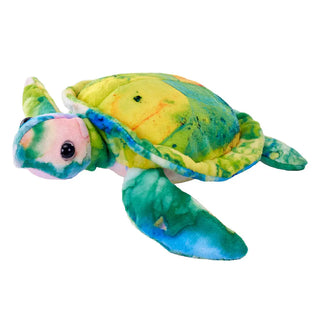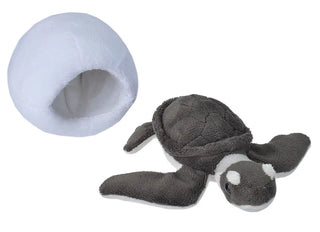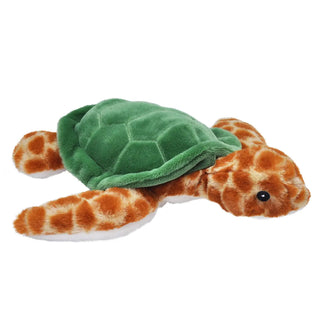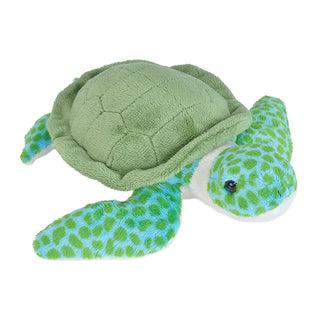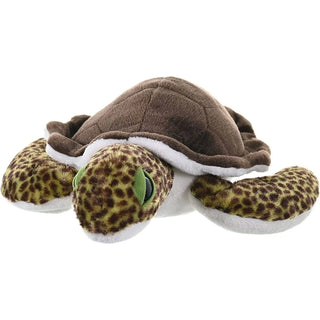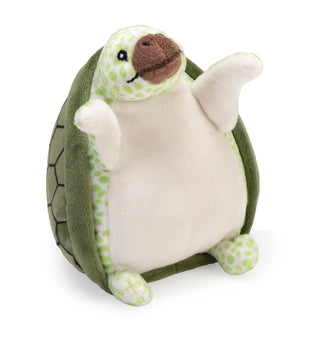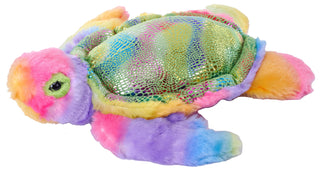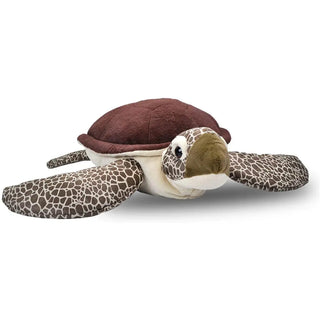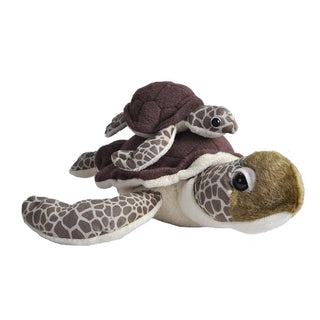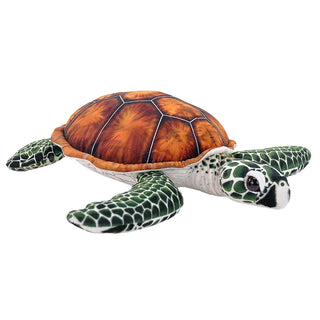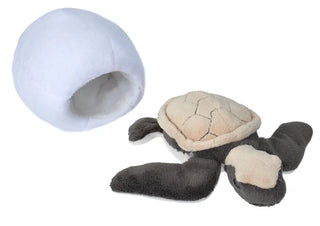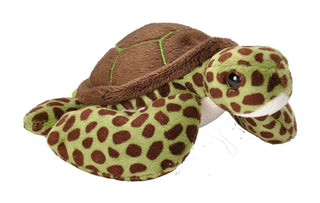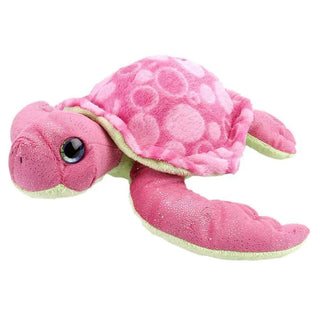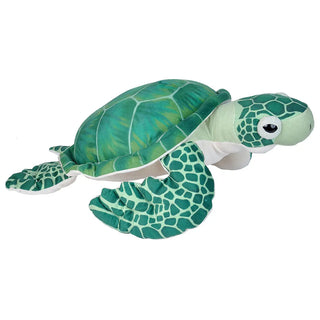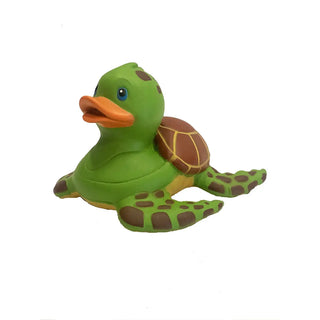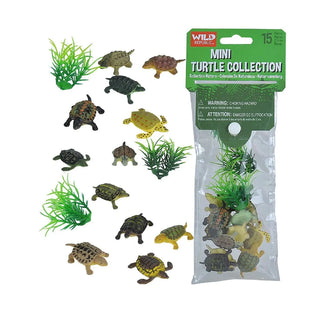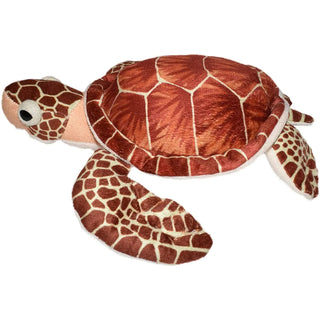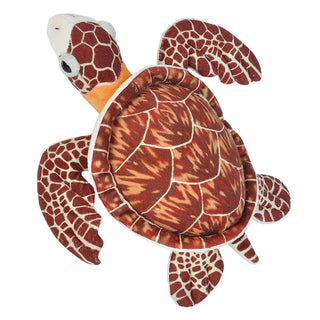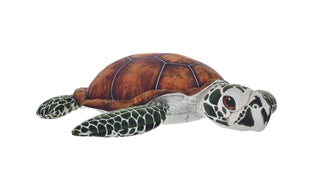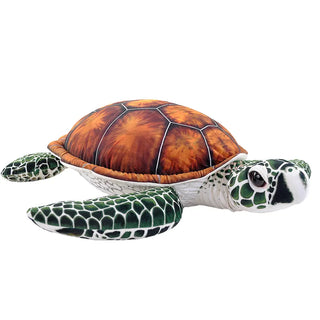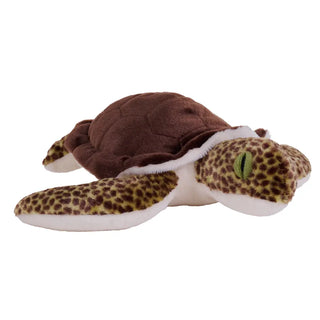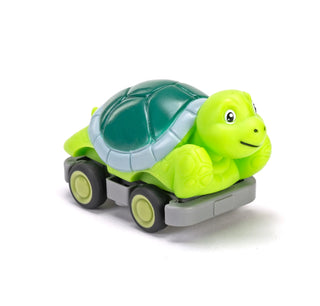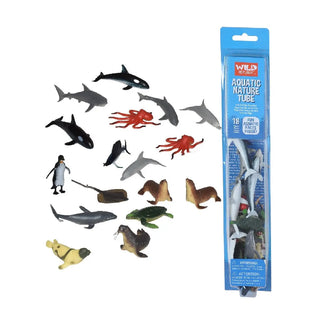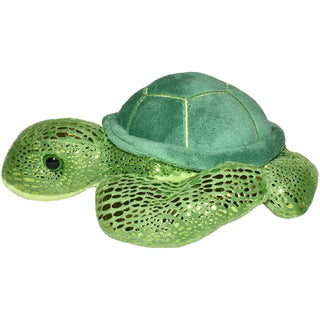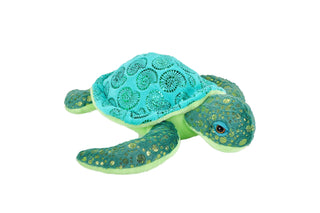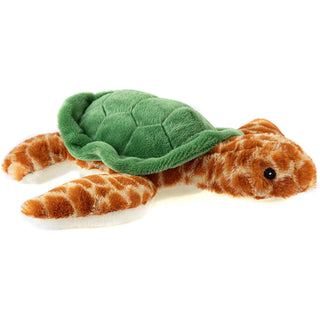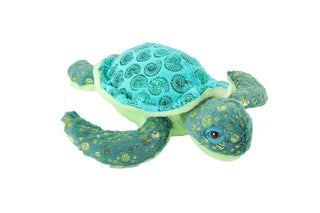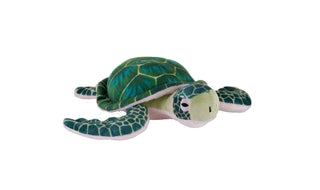Your Search For "sea turtle" Revealed The Following:
Filter
Active Filters
Huggers Sea Turtle Stuffed Animal - 8"
$10.99
- Unit price
- / per
INCLUDES:
- Age:10M+
- AnimalType:Sea Turtle
- Brand:Huggers
- Easter
- Gender:Boy
- Gender:Girl
- Sea Turtle
- Size:8"
$10.99
- Unit price
- / per
Mysteries of Atlantis Sea Turtle
Regular price
$12.00
$14.99
Save 20%
- Unit price
- / per
INCLUDES:
- Age:0+
- Brand:Mysteries of Atlantis
- Gender:Boy
- Gender:Girl
- Size:8"
Regular price
$12.00
$14.99
Save 20%
- Unit price
- / per
Green Sea Turtle Hatchling Stuffed Animal
$10.99
- Unit price
- / per
INCLUDES:
- Age:0+
- AnimalType:Sea Turtle
- Brand:WR Sea Tutle Hatchling
- Gender:Boy
- Gender:Girl
- Sea Turtle
- Size:6"
$10.99
- Unit price
- / per
Sea Turtle Ecokins
$19.99
- Unit price
- / per
INCLUDES:
- Age:0+
- AnimalType:Sea Turtle
- Brand:Ecokins
- Gender:Boy
- Gender:Girl
- Sea Turtle
$19.99
- Unit price
- / per
Green Sea Turtle Stuffed Animal - 11"
$10.99
- Unit price
- / per
INCLUDES:
- Age:0+
- AnimalType:Sea Turtle
- Brand:Sea Critters
- Gender:Boy
- Gender:Girl
- Sea Turtle
- Size:11"
$10.99
- Unit price
- / per
Green Sea Turtle Stuffed Animal - 15"
$22.99
- Unit price
- / per
INCLUDES:
- Age:0+
- AnimalType:Sea Turtle
- Brand:Cuddlekins
- Gender:Boy
- Gender:Girl
- Sea Turtle
- Size:15"
$22.99
- Unit price
- / per
Flipkins Green Sea Turtle Stuffed Animal - 5"
$10.99
- Unit price
- / per
INCLUDES:
- Age:0+
- Brand:Flipkins
- Gender:Boy
- Gender:Girl
- Size:5"
$10.99
- Unit price
- / per
Rainbowkins Sea Turtle Stuffed Animal - 12"
Regular price
$18.40
$22.99
Save 20%
- Unit price
- / per
INCLUDES:
- Age:0+
- Brand:Rainbowkins
- Gender:Boy
- Gender:Girl
- Size:12"
Regular price
$18.40
$22.99
Save 20%
- Unit price
- / per
Sea Turtle Stuffed Animal - 30"
$82.99
- Unit price
- / per
INCLUDES:
- Age:0+
- AnimalType:Sea Turtle
- Brand:Cuddlekins
- Gender:Boy
- Gender:Girl
- Sea Turtle
- Size:30"
$82.99
- Unit price
- / per
Sea Turtle - Mom & Baby 12"
$40.99
- Unit price
- / per
INCLUDES:
- Age:0+
- AnimalType:Sea Turtle
- Brand:Mom & Baby
- Gender:Boy
- Gender:Girl
- Sea Turtle
- Size:12"
$40.99
- Unit price
- / per
Green Sea Turtle Stuffed Animal - 20"
$43.99
- Unit price
- / per
INCLUDES:
- Age:0+
- Brand:Living Ocean
- Gender:Boy
- Gender:Girl
- Size:20"
$43.99
- Unit price
- / per
Hawksbill Sea Turtle Hatchling Stuffed Animal
$10.99
- Unit price
- / per
INCLUDES:
- Age:0+
- AnimalType:Sea Turtle
- Brand:WR Sea Tutle Hatchling
- Gender:Boy
- Gender:Girl
- Sea Turtle
- Size:6"
$10.99
- Unit price
- / per
Pocketkins Eco Green Sea Turtle Stuffed Animal - 5"
$8.99
- Unit price
- / per
INCLUDES:
- Age:0+
- Brand:Pocketkins Eco
- Features:Eco
- Gender:Boy
- Gender:Girl
- Size:5"
$8.99
- Unit price
- / per
Loggerhead Sea Turtle Stuffed Animal - 15"
$22.99
- Unit price
- / per
INCLUDES:
- Age:0+
- AnimalType:Sea Turtle
- Brand:Cuddlekins
- Gender:Boy
- Gender:Girl
- Sea Turtle
- Size:15"
$22.99
- Unit price
- / per
Colorful Sea Turtle Stuffed Animal - 12"
$25.99
- Unit price
- / per
INCLUDES:
- Age:0+
- AnimalType:Sea Turtle
- Brand:Sweet & Sassy
- Gender:Boy
- Gender:Girl
- Sea Turtle
- Size:12"
$25.99
- Unit price
- / per
Green Sea Turtle Stuffed Animal - 20"
$43.99
- Unit price
- / per
INCLUDES:
- Age:0+
- AnimalType:Sea Turtle
- Brand:Living Ocean
- Gender:Boy
- Gender:Girl
- Sea Turtle
- Size:20"
$43.99
- Unit price
- / per
Rubber Duck Sea Turtle
$8.99
- Unit price
- / per
INCLUDES:
- Age:0+
- AnimalType:Sea Turtle
- Brand:Wild Republic Rubber Ducks
- Gender:Boy
- Gender:Girl
- Sea Turtle
$8.99
- Unit price
- / per
Mini Polybag of Turtle Figurines
$4.99
- Unit price
- / per
INCLUDES:
- Age:3+
- AnimalType:Turtle
- Brand:Wild Republic Polybags
- Features:Eco
- Gender:Boy
- Gender:Girl
- Turtle
$4.99
- Unit price
- / per
Loggerhead Sea Turtle Stuffed Animal - 8"
$12.99
- Unit price
- / per
INCLUDES:
- Age:0+
- AnimalType:Sea Turtle
- Brand:Cuddlekins
- Gender:Boy
- Gender:Girl
- Sea Turtle
- Size:8"
$12.99
- Unit price
- / per
Hawksbill Sea Turtle Stuffed Animal - 8"
$12.99
- Unit price
- / per
INCLUDES:
- Age:0+
- AnimalType:Sea Turtle
- Brand:Cuddlekins
- Gender:Boy
- Gender:Girl
- Sea Turtle
- Size:8"
$12.99
- Unit price
- / per
Message From the Planet Sea Turtle
Regular price
$17.60
$21.99
Save 20%
- Unit price
- / per
INCLUDES:
- Age:0+
- Brand:Message From The Planet
- Gender:Boy
- Gender:Girl
- Size:12"
Regular price
$17.60
$21.99
Save 20%
- Unit price
- / per
Naturekins Green Sea Turtle Stuffed Animal - 12"
$25.99
- Unit price
- / per
INCLUDES:
- Age:0+
- Brand:Naturekins
- Gender:Boy
- Gender:Girl
- Size:12"
$25.99
- Unit price
- / per
Green Sea Turtle Stuffed Animal - 30"
$101.99
- Unit price
- / per
INCLUDES:
- Age:0+
- Brand:Living Ocean
- Gender:Boy
- Gender:Girl
- Size:30"
$101.99
- Unit price
- / per
Cuddlekins Eco Green Sea Turtle - 12"
$24.99
- Unit price
- / per
INCLUDES:
- Age:0+
- Brand:Cuddlekins Eco
- Features:Eco
- Gender:Boy
- Gender:Girl
- Size:12"
$24.99
- Unit price
- / per
Mellowkins Sea Turtle Stuffed Animal - 12"
$24.99
- Unit price
- / per
INCLUDES:
- Age:0+
- Brand:Mellowkins
- Gender:Boy
- Gender:Girl
- Size:12"
$24.99
- Unit price
- / per
Wild Racers Sea Turtle Action Toy - 4.5"
$8.99
- Unit price
- / per
INCLUDES:
- Age:18M+
- Brand:Wild Racers
- Gender:Boy
- Gender:Girl
- Size:4.5"
$8.99
- Unit price
- / per
Tube of Aquatic Figurines with Playmat
$15.99
- Unit price
- / per
INCLUDES:
- Age:3+
- Brand:Wild Republic Nature Tubes
- Easter
- Gender:Boy
- Gender:Girl
$15.99
- Unit price
- / per
The Deep Blue Discovery Bundle
Regular price
$57.99
$64.95
Save 11%
- Unit price
- / per
INCLUDES:
- Cuddlekins Mini Beluga Whale 8"
- Ecokins Sea Turtle 12"
- Flipkins Axolotl 5"
- Hug'Ems Mini Hermit Crab 7"
- Huggers Dolphin 8"
Regular price
$57.99
$64.95
Save 11%
- Unit price
- / per
Sea Turtle Stuffed Animal - 7"
$9.99
- Unit price
- / per
INCLUDES:
- Age:0+
- AnimalType:Sea Turtle
- Brand:Hug'ems
- Easter
- Gender:Boy
- Gender:Girl
- Sea Turtle
- Size:7"
$9.99
- Unit price
- / per
Sea Turtle Stuffed Animal - 8"
$12.99
- Unit price
- / per
INCLUDES:
- Age:0+
- AnimalType:Sea Turtle
- Brand:Cuddlekins
- Gender:Boy
- Gender:Girl
- Sea Turtle
- Size:8"
$12.99
- Unit price
- / per
Sea Turtle Foilkins Jr
$12.99
- Unit price
- / per
INCLUDES:
- Age:3+
- Brand:Foilkins Jr
- Gender:Boy
- Gender:Girl
- Size:6"
$12.99
- Unit price
- / per
Sea Turtle Ecokins Mini
$11.99
- Unit price
- / per
INCLUDES:
- Age:0+
- AnimalType:Sea Turtle
- Brand:Ecokins
- Gender:Boy
- Gender:Girl
- Sea Turtle
$11.99
- Unit price
- / per
Sea Turtle Stuffed Animal - Foilkins
$25.99
- Unit price
- / per
INCLUDES:
- Age:3+
- Brand:Foilkins
- Gender:Boy
- Gender:Girl
- Size:12"
$25.99
- Unit price
- / per
Cuddlekins Eco Green Sea Turtle Stuffed Animal - 8"
$14.99
- Unit price
- / per
INCLUDES:
- Age:0+
- Brand:Cuddlekins Eco
- Features:Eco
- Gender:Boy
- Gender:Girl
- Size:8"
$14.99
- Unit price
- / per
Message From the Planet Jumbo Sea Turtle
Regular price
$58.40
$72.99
Save 20%
- Unit price
- / per
INCLUDES:
- Age:0+
- Brand:Message From The Planet
- Gender:Boy
- Gender:Girl
- Size:30"
Regular price
$58.40
$72.99
Save 20%
- Unit price
- / per
You're viewing 1-35 of 35 results


